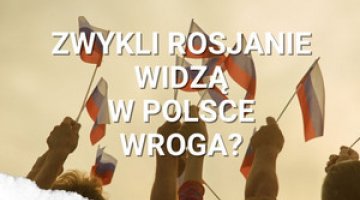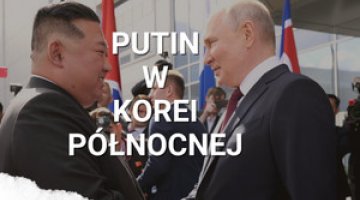A new concept of migration policy in Russia
On 13 June, President Vladimir Putin endorsed the concept of a national migration policy for the Russian Federation until 2025. This is the first comprehensive document defining the goals, directions and mechanisms for implementing a migration policy in Russia. For the Russian Federation, the principal migration destination for citizens of former Soviet countries, migration processes are an important factor affecting the country’s socio-economic situation: on one hand, they compensate for any deficiencies in the labour market, but on the other they lead to the exacerbation of social tensions. The content of this plan indicates a pragmatic approach to the migration question, which is presented as a prescription to alleviate the negative effects of Russia’s demographic decline and the gaps in its domestic labour market. How effectively this concept is carried out will depend on the legislation and its implementation. Many of the procedures related to migration (including entrance and residency) form the basis for widespread corrupt practices. Regulating these procedures may be undermined by certain government and business employees who have benefited from illegal migration.
The new migration policy, and how to implement it
The new concept was developed by the Federal Migration Service. At the declarative level, this document is a response to the real demands of the Russian economy and the labour market. According to forecasts by experts from the Russian Academy of Sciences, over the next five years the economically active population in Russia will decrease by about one million a year; so without the influx of labour from abroad, Russia will be unable to overcome these negative trends.
The concept makes clear that immigration is a positive phenomenon, which is necessary for Russia’s further development. The plan’s main stated aim is to increase Russia's population and stimulate the country’s economic development. To this end, it calls for Russia to attract immigrants, including highly skilled workers, students and cheap labour – workers employed in sectors already dominated by immigrants, namely construction, utilities and commerce. Emphasis is placed on developing a system of incentives for immigrants to reside in Russia permanently, and adapting Russian legislation to the real needs of the labour market. The concept provides for the gradual simplification of procedures concerning entry into the country, employment, residential registration and medical care for immigrants, as well as for the development and implementation of comprehensive integration programmes which would prevent the diasporas becoming isolated and the rise of tensions in relations with other social groups. Encouraging the immigration and integration of immigrants is intended to overcome the effects of negative demographic trends (population decline, an ageing society, the depopulation of Siberia and the Russian Far East) and the human capital outflow from Russia (mostly of the young and well-educated), as well as to meet the needs of country’s labour market. Additionally, the plan involves fostering the internal migration of Russian citizens, by reducing administrative barriers and creating banks of jobs, housing and transport infrastructure for migrants, among other measures. In order to increase Russia’s attractiveness as a destination for migration, the concept envisages the development of centres to promote Russian language and culture across the CIS, as well as a system of incentives for foreign students interested in studying at Russian universities.
A change of tone on the migration question
From the content of this plan, a coherent policy vision on the migration question emerges: Russia is to become more open to immigrants. This represents a departure from the populist declarations which Vladimir Putin made during the election campaign: in his policy statement "Russia: The National Question" from January this year, he promised to radically tighten immigration rules and residency registration, and to increase the formal requirements demanded of potential foreign workers. In this way, Putin tried to increase his support with the moderately nationalist electorate, drawing on anti-immigrant sentiments rooted in Russian society. As demonstrated by the results of a survey by the WCIOM centre published in February, the majority of Russians favour such ideas (77% of respondents supported the tightening of migration laws; 75% supported tightening the rules on registration and making penalties for breaking them more severe; and 67% favoured introducing Russian-language examinations for immigrants).
So far, Russia's migration policy has been inconsistent, and the Kremlin’s actions on immigration issues have mainly been reactive; for example, after the ethnic riots in Manezh Square in Moscow in 2010, the authorities announced a tightening of the rules on migration, to pacify anti-immigrant sentiment among the public. Government policies at federal and regional levels were often uncoordinated, and the problem of illegal immigration has been used instrumentally to achieve the current domestic policy objectives (for example, campaigns were launched against immigrants after the arrest of Russian pilots in Tajikistan in November 2011, to demonstrate the Kremlin's determination to defend Russian citizens to the public). This led to an increase in xenophobic sentiment in Russian society, and the deepening of ethnic divisions.
The migration situation in Russia
Russia is the main destination of migration within the CIS, and citizens of the Commonwealth countries represent about 90% of all immigrants. According to the Federal Migration Service, about 1.3 million legal immigrants now reside permanently in Russia; official data from the Russian Statistical Office states that the influx of immigrants to Russia in 2010 amounted to 191,700 persons. However, the actual rate of migration may be much higher: expert estimates vary widely, and range between 5 and even 12 million (legal and illegal immigrants). The largest group of foreigners are unskilled labourers from the South Caucasus and Central Asia, who take low-paid jobs (janitors, construction workers, drivers, small traders) – professions that Russian citizens do not want to practise. Many of these people have been living in Russia illegally and are not protected by Russian law; they receive no social benefits, and are vulnerable to exploitation by their employers. Another phenomenon that causes tension and provokes nationalist sentiments in Russian society is that of internal migration, which primarily concerns residents of the Russian North Caucasus republics who move to the cities of European Russia in search of work. According to census data, during the period from 2003 to 2009 about 15 million inhabitants of Russia (10% of all its citizens) changed their region of residence within the RF. The immigrants’ cultural, linguistic and religious differences and the lack of integration programmes lead them to live in closed enclaves, and their behaviour – and sometimes even their mere presence – causes negative reactions among the native inhabitants.
Prospects for achieving the new policy’s objectives
The concept of a national migration policy for the Russian Federation to 2025 is the Russian government’s response to the country’s real social and economic problems, the solution to which is to open Russia up to more immigrants. However the nature of the document, which only sets the general directions of development without offering any specific solutions, means that merely adopting the concept does not mean a real change in Kremlin policy. This is only the government’s first step towards consciously managing and increasing its control over migration processes in the country. Implementing the concept may have positive effects if this process is supported by appropriate regulations which are consistently enforced. The Russian economy’s undeniable need for foreign workers makes the implementation of this concept more likely. Yet on the other hand, rationalising migration in Russia is not in the interests of the administration and migration services sector, who profit from controlling illegal migration procedures. In Russia there is an extensive network of companies which issue fictitious residency documents (for example by registering a few hundred people in single locations, a phenomenon Russians have dubbed ‘rubber apartments’). Law enforcement authorities reap the financial benefits of controlling immigrants who do not have proofs of residency or other necessary documents. These groups may sabotage the implementation of new solutions, which in turn may weaken the effect of adopting the new concept. Another major challenge for the government will be to launch an information campaign to promote the new concept, because the idea of increasing the number of immigrants is controversial in Russian society, especially in nationalist circles.
Appendix
Migration in the Russian regions in 2010, in thousands of persons
|
Internal and foreign migration |
2010 |
||||||
|
total migrations within the RF |
in it |
international migration |
in it |
||||
|
within one RF region |
between RF regions |
from CIS countries |
from other countries |
||||
|
Russian Federation |
2 102, 3 |
1 910,6 |
1 035,9 |
874,7 |
191,7 |
179,1 |
12,6 |
|
Central Federal District |
550,7 |
485,1 |
178,1 |
307,0 |
65,7 |
61,9 |
3,7 |
|
Moscow |
125,9 |
110,8 |
- |
110,8 |
15,1 |
13,3 |
1,7 |
|
North-Western Federal District |
195,0 |
177,3 |
70,9 |
106,4 |
17,7 |
16,7 |
1,0 |
|
St Petersburg |
67,1 |
62,5 |
9,6 |
52,8 |
4 ,7 |
4,2 |
0,4 |
|
Southern Federal District |
185,5 |
171,9 |
84,9 |
87,0 |
13,7 |
12,1 |
1,6 |
|
North Caucasian Federal District |
123,4 |
117,2 |
75,5 |
41,8 |
6,2 |
5,6 |
0,6 |
|
Volga Federal District |
398,4 |
364,4 |
251,6 |
112,8 |
34,0 |
31,8 |
2,2 |
|
Urals Federal District |
202,2 |
181,3 |
103,4 |
78,0 |
20,9 |
20,0 |
0,9 |
|
Siberian Federal District |
350,1 |
322,4 |
214,5 |
107,9 |
27,7 |
26,3 |
1,5 |
|
Far East Federal District |
96,9 |
91,1 |
57,1 |
34,0 |
5,8 |
4,7 |
1,1 |
On the basis of the report from the Russian Statistical Office entitled "Population and Migration of the Russian Federation in 2010". The data contained in the table are official figures, and do not take the influx of illegal immigrants into account. http://www.gks.ru/bgd/regl/b11_107/Main.htm
International migration between Russia, the CIS countries, baltic states and Georgia, in thousands of persons
|
2009 r. |
2010 r. |
|||||
|
came to RF |
left the RF |
net migration rate |
came to RF |
left the RF |
net migration rate |
|
|
Total |
270,6 |
21,5 |
249,1 |
179,1 |
22,2 |
156,9 |
|
Armenia |
35, 8 |
1,0 |
34,8 |
19,9 |
0,7 |
19,2 |
|
Azerbaijan |
22, 9 |
1,1 |
21,7 |
14,5 |
1,1 |
13,4 |
|
Belarus |
5,5 |
2,6 |
2,9 |
4,9 |
2,9 |
2,0 |
|
Estonia |
0,5 |
0,2 |
0,3 |
0,6 |
0,2 |
0,4 |
|
Georgia |
7,5 |
0,6 |
6,8 |
5,2 |
0,5 |
4,8 |
|
Kazakhstan |
38,8 |
7,2 |
31,6 |
27,9 |
7,3 |
20,5 |
|
Kyrgyzstan |
23,3 |
0,7 |
22,6 |
20,9 |
0,6 |
20,3 |
|
Lithuania |
0,4 |
0,2 |
0,3 |
0,4 |
0,2 |
0,3 |
| Latvia |
0,7 |
0,2 |
0,5 |
0,8 |
0,1 |
0,7 |
|
Moldova |
16,4 |
0,6 |
15,8 |
11,8 |
0,6 |
11,2 |
|
Tajikistan |
27,0 |
0,6 |
26,4 |
18,2 |
0,7 |
17,5 |
|
Turkmenistan |
3,3 |
0,6 |
3,3 |
2,3 |
0,1 |
2,2 |
|
Ukraine |
45,9 |
5,7 |
40,2 |
27,5 |
6,3 |
21,2 |
|
Uzbekistan |
42, 5 |
0,7 |
41,9 |
24,1 |
0,8 |
23,3 |
On the basis of the report from the Russian Statistical Office entitled "Population and Migration of the Russian Federation in 2010". The data contained in the table are official figures, and do not take the influx of illegal immigrants into account. http://www.gks.ru/bgd/regl/b11_107/Main.htm




